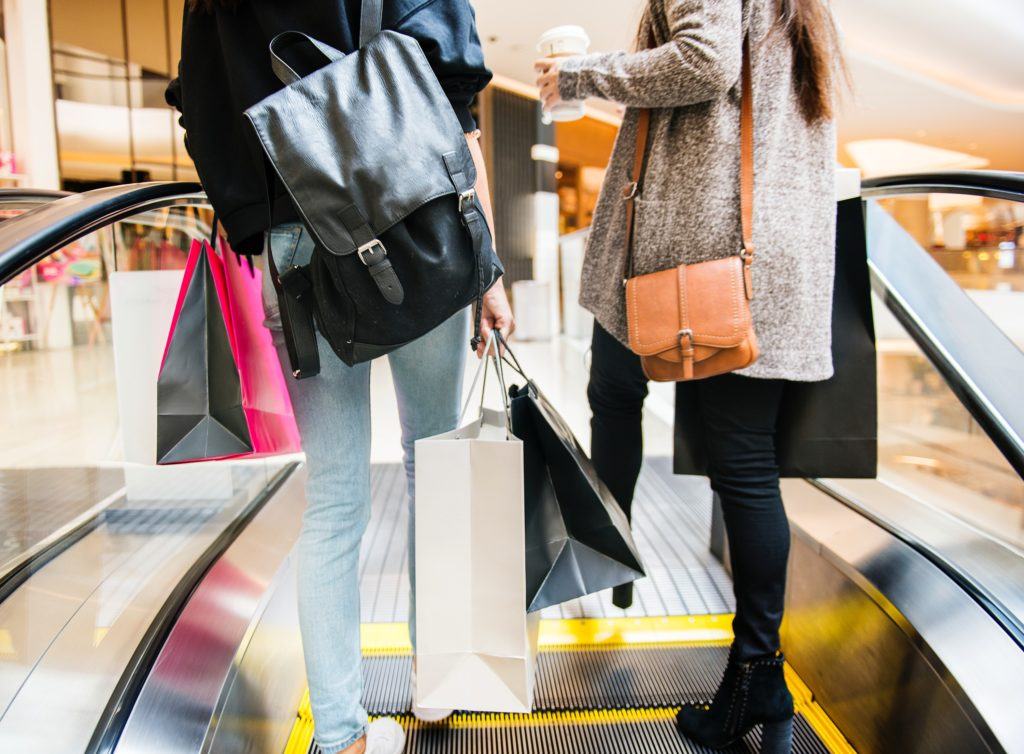
When it comes to music in your business, there is a lot to consider. All too often, business owners make the mistake of playing the music they enjoy versus the music that could actually provide a noticeable impact to bottom line. As seen in 2005 research completed by the American Psychological Association, music was the key sensory factor in making impulse buyers purchase more, and of those that made an unintentional purchase, it was noticed that these purchasers dropped nearly $30 more than planned when exposed to music in the store.

However, there is no “one-size-fits-all” method for determining what will work best for your space. Outlining business goals — selling more, retaining customers, providing an outstanding experience — can help develop a winning audio strategy. From improved mood, to altered perception of time, to the development of a desired emotion, the benefits of audio are clear. Three elements have research-backed effects on consumer behavior in-store, and should be considered when determining what playlist should come from the speakers in your space:
Research has found that tempo is closely correlated to the actions that a consumer subconsciously takes. For business owners, this is incredibly powerful, as you have the ability to dictate exactly how you want customers to behave. It has been shown that slower music keeps people around longer, which typically results in visitors purchasing (up to 32%!) more as duration increases. For example, slow music played in restaurants caused customers to eat slower and spend a noticeably greater amount on alcohol — perfect for fine dining establishments, or the afternoon lull. However, if a fast-casual restaurant is experiencing a dinner rush and a shortage of tables, faster-paced music can make patrons believe they have occupied the space longer, thus turning tables faster as a result. The tempo of the background music in a space can not only provide a tangible change in the atmosphere of the business but can alter the mood of visitors in a positive manner when thoughtfully executed.
The volume of music also is important to consider when utilizing audio in your space. While most research agrees that the volume of music should match the energy of the patrons of your space, there are a few additional factors to consider. First, loud music has been correlated to less time spent shopping when compared to softer music played in stores. Additionally, young shoppers tend to respond better to music played in the foreground of a space, versus older shoppers who typically stay in a space longer when music is in the background. Determining specific business goals will help define exactly where your volume dial should sit. The Association for Consumer Research found that loud music will keep customers constantly flowing through a space, whereas quieter tunes will help customers stay and enjoy the ambiance a little longer.
The genre of music to play in a store is fairly dependent on the ideal customer for a business. Family-friendly establishments have seen better results when country music is played since 42% of Americans listen to and prefer that genre. However, high-end liquor stores have seen customers leaving with more expensive bottles of wine when classical music is guiding them through the space. Consumers have noted that classical music has made them feel more sophisticated, and therefore, they wanted their purchase to reflect that feeling. This is also apparent during the holiday season, as retailers have noticed higher purchase rates of festive goods when Christmas music is playing versus a non-seasonal playlist. Music has the ability to connect with a specific emotion, making customers feel something in regards to a product, rather than think about the purchase. Additionally, determining what genre most closely relates with your target market is important because you may want to avoid it, as research showed that consumers spent 8% less time shopping when they heard recognizable music versus unfamiliar tracks because they perceived time to pass more quickly.
The right music cannot only help customers stay longer in your space, but also can make them excited to come back. However, perfecting your playlist can take precious time and attention away from your business. Audio Experience Solution can make your job easier with a library of curated playlists, thoughtful scheduling capabilities, and access to professional voice talent to speak directly to your customers — saving business owners time and energy, while still allowing them to reap the benefits that come with tailoring the customer experience. The right music, at the right time, can influence customers to stay longer, spend more, or feel more positively about their experience. Music can reinforce a message and emphasize the influence of the entire, holistic shopping experience on customer behavior creating happier customers and a better bottom line.
Interested in learning more about using an Audio Experience Solution (AES) platform and how audio can revolutionize the customer experience in your space? Request a demo of Vibenomics today and learn how you can start creating on-brand music and messaging for your customers.
As we approach a new year, we took a moment to look back on the work that was put in over the last twelve months that helped to make Vibenomics better each day. It’s been a year of growth, change, new faces, and big wins. We’ve broken down some of the accomplishments that we are celebrating from 2018…
At the start of the year, Vibenomics expanded its service offerings to include a platform for advertisers to reach a unique group of people through our Vibenomics Ad Market. This allows customers with Vibenomics music and messaging in their space to open up some of the available “air time” in their locations to businesses that wish to advertise to their customers while creating an additional revenue stream. Not only did this provide a great learning experience for our team, but it also allowed us to work directly with national brands such as Live Nation, Metro by T-Mobile, and Faygo.
Between our annual chili cook-off in the office and our first company retreat, February was all about the love we have for our Vibe Tribe. While the title of “Chili Cookoff Champ” stayed in the Product Development department, everyone was a winner after our Vibenomics team retreat. The team gathered at an offsite location for the day to establish goals, provide reports about departmental initiatives, fine-tune our core values, and share in the special culture that we have at Vibenomics. Some friendly competition in duckpin bowling closed out a successful day.
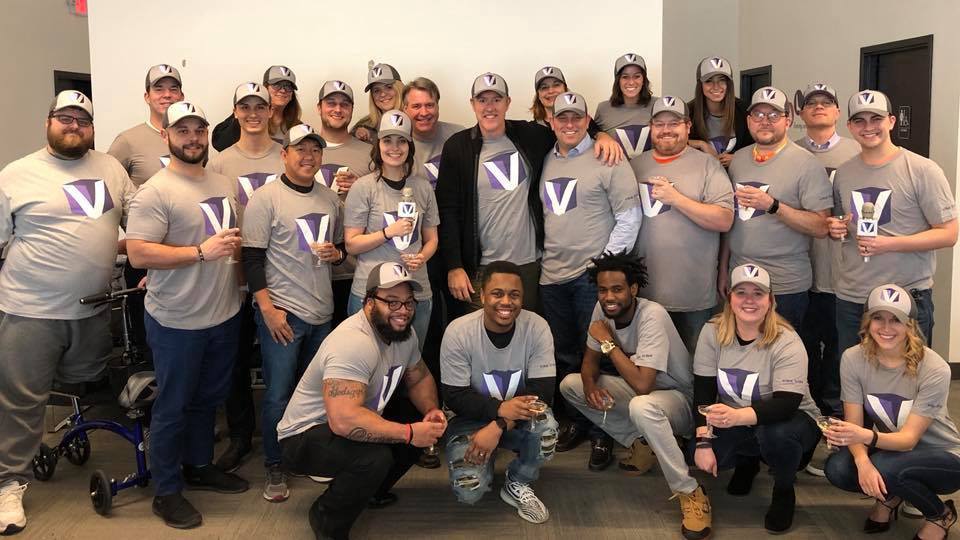
March brought the move into our much-anticipated new office space. While it was just down the road from the original office, our new office in the Braden Building allows for greater collaboration with an open concept layout, a variety of breakout rooms, large kitchen, and an open door policy with the Leadership Team. Our beautiful view of the city of Fishers also provides a reminder of how lucky we are to be part of the growing tech scene in Indianapolis. Additionally, being our own moving crew brought the team together again as well set-up furniture, organized our materials, and made North Street feel like home. Thanks to Keyhole Marketing for this great post about our new office space!
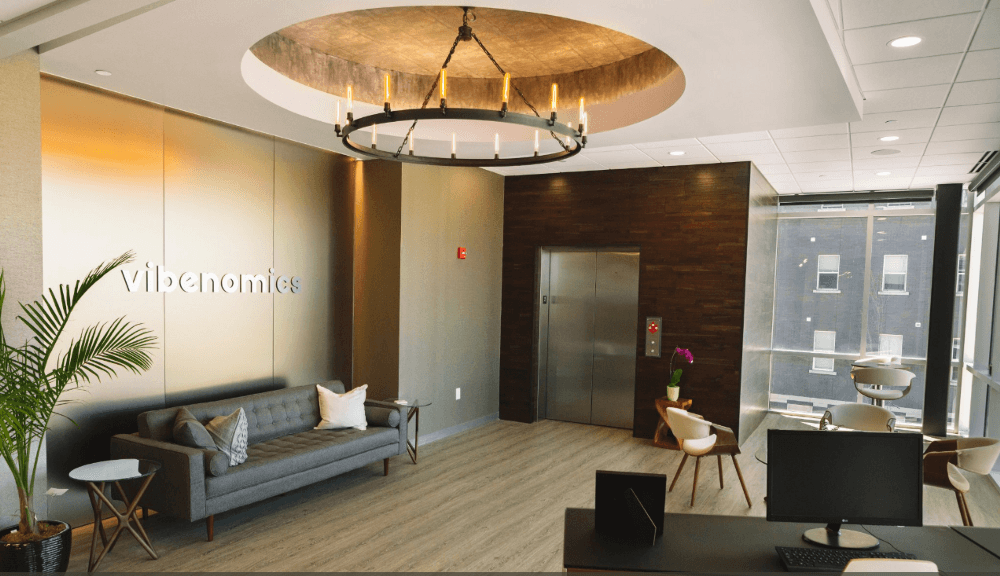
After settling into our new space, it was time to show it off! Local business leaders, City of Fishers officials, friends of Vibenomics and many more joined our team for an evening benefiting the Fishers Youth Assistance Summer Lunch Program. Thanks to the generosity of the attendees, we reached our goal of $30,000 in support of the program.
To continue the excitement of April, we were nominated for two Mira Awards — Tech Service of the Year and Scale-Up of the Year. We enjoyed having the opportunity to join entrepreneurial companies from across the state to celebrate the growth of the technology industry in Indiana. The Mira Awards, hosted by Techpoint, were a great time for us to reflect on the progress that the company had made in just a little over a year since it was founded.
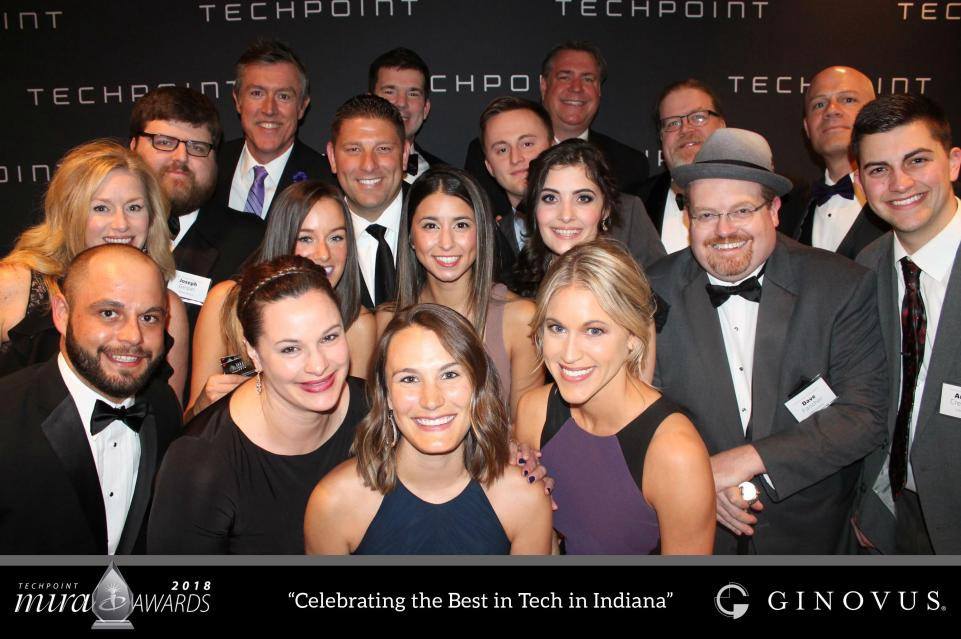
Known as the most exciting month of the year in Indiana, the excitement of music and messaging captured the attention of the Indianapolis International Airport in May. Our Audio Experience Software now sends passengers off on a good note and welcomes millions of visitors every year, allowing airport officials to revolutionize the customer experience that they provide. Our partnership with the Indianapolis International Airport gained attention from the Indianapolis Business Journal and Inside Indiana Business, as well.
June provided our team with plenty of new opportunities. To begin the month, our CEO, Brent Oakley, headed to Texas to moderate a panel at the Interactive Customer Experience Summit about the value of in-store audio and be a booth exhibitor.
Following the return from Texas, Vibenomics welcomed three new employees to the company via local talent pipeline programs. The Product Development team added IUPUI Computer Science student, Gabriela Justice, to their team as part of the Techpoint Xtern summer internship program. In addition, Vibenomics became a host company for Orr Fellowship and added two recent graduates to the Finance and Marketing departments for a two-year placement.
We closed out the month by inviting our investors into the office for our semi-annual report. We shared updates on our upcoming software release, the partnership with the airport, and other exciting news from the first half of the year over breakfast from our favorite local cafe. Reid Goldsmith, Senior Director of IT for the Indianapolis Airport Authority, was also in attendance to speak on their success with using Vibenomics.
The Vibenomics team donned their purple and hit the streets of Fishers to be a participant in the inaugural Spark! Fishers parade celebrating the Fourth of July. Our team had a great time building the float and interacting with community members along the parade route. We brought along our Director of Programming to make live audio announcements throughout the parade, too!

August provided us with several opportunities to stay closely engaged with our community. We began to host Fishers Code & Coffee, a weekly morning meetup for tech enthusiasts to gather and network over coffee. We enjoy having the opportunity to welcome many talented minds into our office each week!
Additionally, we were the media sponsor for two large-scale Indianapolis events, Motorcycles on Meridian and Indy LaborFest, participated in Techpoint Sales Bootcamp interview day, and CEO Brent Oakley was featured on the Gut+Science podcast!
This month, we capitalized on the success we saw with our Parks & Recreation customers and had the opportunity to be an exhibitor at the National Recreation & Parks Association conference. We joined thousands of park professionals in Downtown Indianapolis to talk about how they could use music and messaging to enhance the experience in their space with many productive conversations and ideas for future growth.
Our Sales Team hit the road and headed to Las Vegas for a trip to our largest tradeshow to date, the National Association of Convenience Stores Expo. Convenience store owners were excited about the opportunities that the Vibenomics Audio Experience Software could provide them to speak directly with their customers without the addition of visual distractions and our team had the chance to form relationships with c-store networks across the nation at meals, events, and meetings during their stay in Las Vegas. To see more about this trip, check out the hashtag #GoodVibesinVegas on Twitter and Instagram!
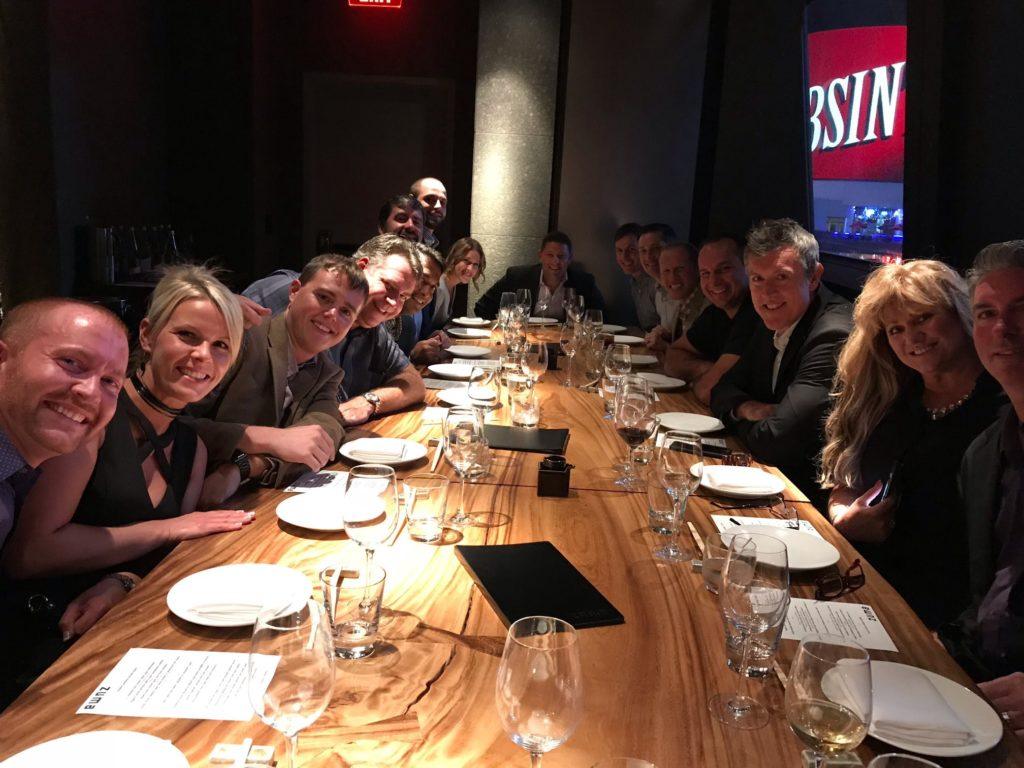
Shortly after the sales team returned, we celebrated the “first birthday” of our rebrand to Vibenomics. We recognized a year of growth and change with birthday cake, a pinata, and — of course — plenty of purple!
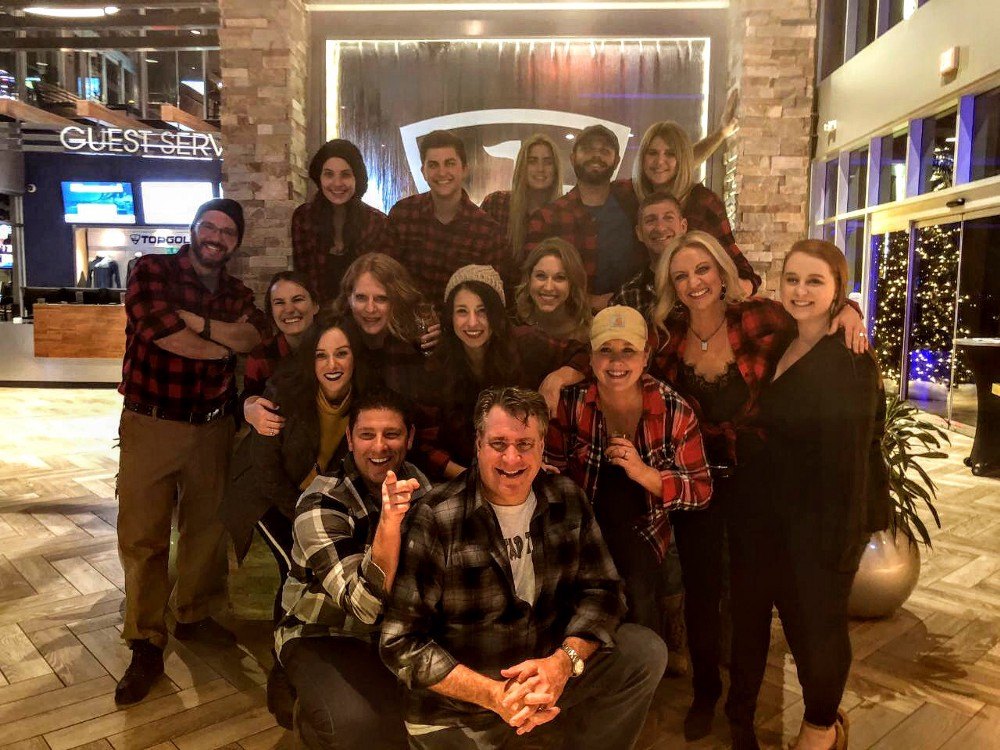
The Vibenomics team got into the holiday spirit early and had our annual gathering for employees and friends to celebrate another year coming to a close. This year’s party featured a “Lumberjack Bash” theme that filled the room with plenty of plaid attire. We participated in a white elephant gift exchange, “Office Guess Who” game with employees’ childhood photos, and — as always — plenty of audio messages with our Director of Programming on the microphone as the evening’s emcee. Our Brand Manager even won an award for the design created for our party favors!
To close out the year, the Vibenomics Leadership Team spent a day offsite at the company’s first leadership retreat. After a day full of brainstorming and hard work, the team returned to the office with plenty of ideas to set us up for even greater success in the new year.
After a year full of many “firsts”, we close out 2018 with a sense of gratitude for challenges that taught lessons in persistence and creativity, milestones that allowed us to reflect on how far we’ve come, and the ambitious team that we get to build the business with every day. Vibenomics is ready for you, 2019!
In an era where convenience is key, trends still show that customers value a great in-store experience. Online retail and expedited shipping have redefined what convenience means to the average consumer and how that experience can translate into brick-and-mortar spaces. “Experience counts. More consumers today are seeking a great, if not exceptional, experience when they shop — and yes, that includes within the convenience channel,” notes CS News on the makings of a great convenience store shopping trip.
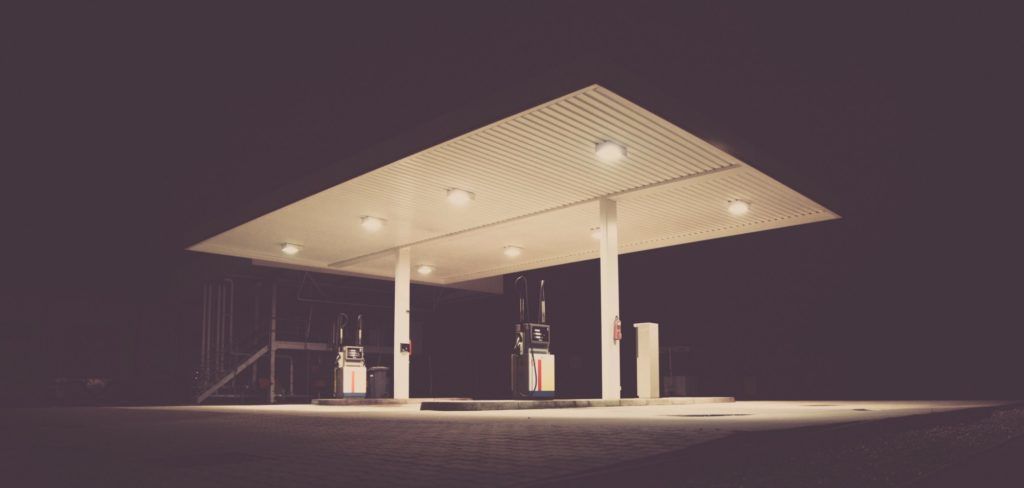
Customers understand that businesses have the tools to learn the desires of individuals that walk through their doors and want store owners to use this knowledge to improve every interaction. Technology is advancing quickly and it is expected that innovation is being embraced in order to provide the best experience possible. Research by Aimia, a loyalty analytics company, noted personalized and relevant content has a definitive impact on customer loyalty. The upward growth of both competition and technology put convenience stores in a unique position to create personalized shopping experiences for their customers, especially by tapping into the information that means the most to them, such as community events and loyalty programs. Localizing and customizing the content that customers hear during their brief in-store interactions has the potential to be what makes the experience exceed expectations.
The National Association of Convenience Stores found that the average time it takes a customer to complete their in-store shopping at a convenience store location is between 3 to 4 minutes, including the time spent walking to and from their vehicle. With a short window of opportunity to delight the customer, how can convenience store owners provide their visitors with the best experience to keep them coming back in the face of many equally convenient alternatives? President and CEO of Sheetz convenience stores noted that “figuring out ways to disrupt from within, while keeping an eye on those also seeking to sell convenience” is the key to continuing success. C-Stores must find a way to merge personalized content with innovative technology to reach customers directly at the point of sale.
Audio Experience Software (AES), like Vibenomics, provides the technology platform to create a unique and personalized experience for the customer during the duration of their visit through the power of curated music and messaging. Indiana-based Ricker’s convenience stores utilize the Vibenomics AES platform in their 56 locations to communicate with their customers and promote items such as food or beverage offerings, loyalty programs, and localized sports recaps and weather reports without the addition of visual clutter or low-impact marketing efforts. “[With Vibenomics] we have a great platform to produce commercials and change commercials on the fly and to make sure that we are getting the message across to consumers, we knew we needed to have great audio,” states Keith Broviak, Ricker’s Director of Marketing, “We are able to take that message and create that commercial in the morning and in the afternoon have it in the stores — you can’t do that with any other type of media”.
Interested in learning more about using an Audio Experience Software (AES) platform and how audio can revolutionize the customer experience in your space? Request a demo of Vibenomics today and learn how you can start creating on-brand music and messaging for your customers.
You’ve poured countless hours into your brand — perfecting every pixel of your logo, crafting the perfect slogan to walk the line between “to the point” and “can’t get it out of my head,” and your Pantone color codes are the only numbers you can remember these days. Your brand is your baby, and rightfully so, but what are you doing to protect it in your space?
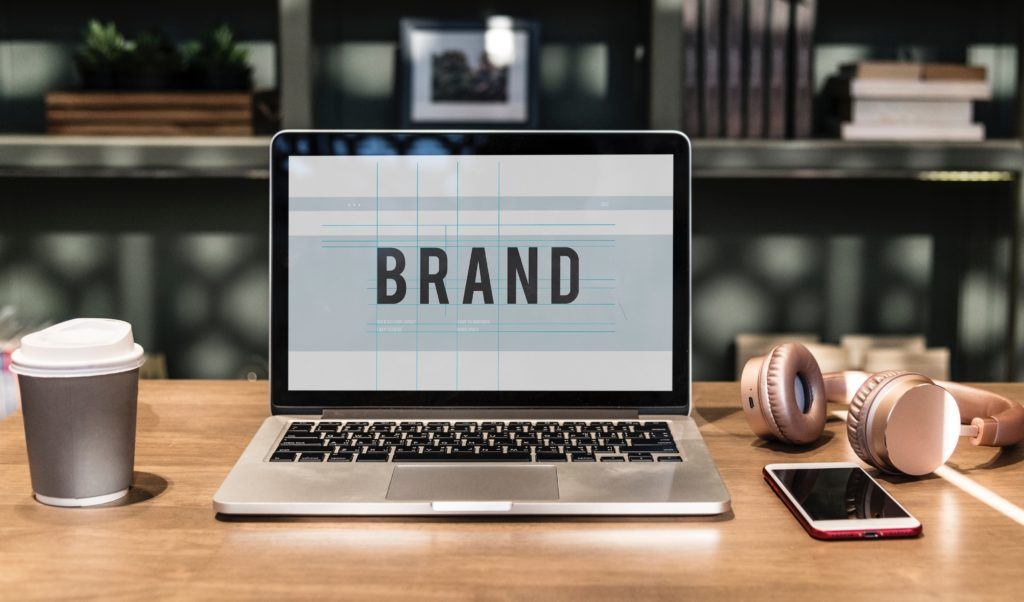
Your brand heavily determines how both new and loyal customers interact with your business. While it feels like you’ve really made it when your brand attributes finally get the street credit they deserve, these tangible parts of your brand are simply ways to spark thought. By controlling your brand and extending it through your space, your customers are given a full-circle experience that can differentiate you from your competitors. An Audio Experience Solution (AES) allows you to help dictate the customer experience and further solidify your brand in the mind of consumers while they are in your space. The following are some additional benefits that tapping into your customers’ auditory senses can have on your business:
The right music can create the feeling that your visual brand attempts to provide, with the ability to strike on additional emotional factors that visuals cannot do alone. Having your vibe match consumers’ previously established perception of your brand will only improve the overall in-store experience. Pairing your product with the perfect tunes will create brand associations that extend beyond your walls and provide a more continuous experience. With all of the unique features, such as thoughtful messaging strategy, enterprise control, and API integration that only an AES system can provide, your company has the ability to create a unique in-store experience for customers, only strengthening brand associations.
The best place for your brand to be is top-of-mind! A good playlist can make the in-store experience more enjoyable, but a well-used Audio Experience Solution can keep customers coming back. Carefully curating the playlist and messaging can target customers in a way that makes them feel like valued members of the organization. Targeting your ideal customers through the thoughtful use of today’s top hits, fan favorites, or the best classics can not only make them feel at home in your environment but also add another sensory element to your brand and make the experience within your space feel more individualized and unique.
Promise the lowest prices? Support a charitable organization? Sprinkling in audio messages in-store can spark attention and remind customers of company values — further establishing the brand and keeping it memorable. Additionally, catching customer attention can help them engage in your brand mission beyond simply purchasing your product or service.
Interested in learning more? Request a demo of Vibenomics today and learn how you can start creating on-brand music and messaging for your in-store customers using the pioneering Audio Experience Solution.
Audio marketing is becoming more and more recognized for its effectiveness. If a business chooses to supplement its in-store audio strategy with digital displays, it can only serve to strengthen the business’ message, enhance customer and employee experiences, as well as help to grow business organically.
Digital signage is a great way to provide information and entertainment in a tech savvy way. Guess what else does that? You guessed it: audio. Using in-store audio can direct customers to the displays for information, interactive experiences, video clips, or even live social feeds. Digital displays can also be an excellent resource for bettering the overall customer experience, but prove to be even more effective if accompanied with informative audio messaging.
Finding the best display screens for the space and managing audio with on-demand messaging can be the one—two marketing punch a business needs. But how do all of those mediums work together? Here are 5 ways in-store audio can supplement and strengthen a digital display strategy.

How many times have customers walked right on by a digital display without even glancing at it? Even the best, most well-thought out displays can be missed by a customer too busy on their phone, wrangling a child, or talking to a friend. Use in-store audio messaging to help alert that customer, regardless of what is distracting their eyes at the moment.
It’s also important to keep in mind that not everyone reads at the same speed. If the display changes too quickly or has too much content, customers may miss it. And if they miss it the first time, it’s unlikely they’re waiting for the message to come around again. By offering the information in two ways—one on the display and one on audio—customers won’t miss the important message.
Social media is an opportunity to showcase not just products, but happy employees and customers. By sharing those types of messages, a business can spark additional engagement and gain traction on social media channels. Just as important, people like to see their name—or in this case, their handle—in lights. Tying social media, digital display, and in-store audio is a trifecta of marketing strength.
Use in-store audio to tell customers that if they tweet or post a picture, it may be featured on the digital display at the front of the store. Make it a fun contest; encourage them to take a picture of their favorite product, and share why they love it. Tying these three elements together can create unique, buzzworthy content customers and the business alike can benefit from.
Even the best employees can occasionally fall flat on a sales pitch or an upsell opportunity. Digital signage can give customers the most subtle of pushes just by directing their attention to the displayed image or text. Encouraging customers to view the image or watch to see a new way a product can be used or styled through an in-store announcement can help connect to the visual—and can be just the thing to push the sale over the edge.
Using displays to showcase photos of current or prior events to promote upcoming happenings is a great way to get customers excited. Get on the speakers with an announcement instructing event guests where they can go to put on their best model pose, and then share the photos in real-time on the store’s display. Or, use announcements to direct customers to the display for more information about upcoming events in case they want to mark down the details.
Co-marketing efforts can keep events lively. And those photos—with the proper permissions of course—can be used in the promotion of the next event.
Both digital signage and in-store audio on their own are great ways to market to customers while they are physically in a brick and mortar store. But, when used together, they can have a transformational effect on the bottom line. Finding a partner that can help to create messaging—both audio and digital—that compliments one other is key.
Interested in learning more? Request a demo of Vibenomics today and learn how you can start creating on-brand audio and displays for your in-store customers.
A beautiful website…that has no visitors. A wonderfully curated social media feed…with no one to follow it. All of the careful work put into creating the perfect digital presence, including offers, events, and information that customers can benefit from and engage with. How, though, can businesses drive in-store customers to those valuable digital sites?
This is one of the most common problems businesses encounter when venturing into the digital space. Driving engaged customers to a website or a social experience can be difficult, but there are a few key ways to overcome the challenges and get customers to flock online. One of those key channels to utilize—and coincidentally one of the easiest—is in-store announcements.
Customers are already in the store and likely have their smartphones in-hand, ready to quickly visit a website or social channel right away, or even make a note of a contest or reason to visit later on. Why not take advantage of the captive audience that is already interested in the business and the products or services it offers?
Here are a 8 sure-fire announcement ideas that can help drive website traffic, social media likes, and all manner of social engagement:

1. Encourage customers to visit the website and donate or get involved with a local charity event that the store is hosting. Charity events and fundraisers can bring out the best in staff and customers alike. Use in-store announcements to drive customers to a special landing page so they can learn more about the charity and read information about how they can participate.
2. Drive customers to the business’ Facebook page to participate in a poll about the genre of music for a chance to win a prize. Music can make or break the vibe of a business. One of the most important ways to win in this category is to match the musical tastes to primary customers. Using in-store announcements to drive interested participants to the Facebook page for a poll not only garners new Facebook likes and interactions, but also allows the business to adjust the music—and therefore the vibe—to match their customers’ preferences.
3. Announce a discount on the next purchase if customer posts a photo of their outfit or service, tagging the company. A great way to get customers to a website or social site is through encouraging participation and sharing. Allow customers to brag a little about the way they use or style a product, raise awareness with their followers, and receive a discount? It’s a win all around!
4. Offer a special prize if customers post photos of their workouts, meal plans, or shopping tips every day for a month, using a certain hashtag. For a gym, retailer, or grocery store, getting customers to keep coming back is the crux of the business. Announce a contest while they are already in-store, giving brand fanatics (or wannabes!) an extra incentive to keep sharing the love.
5. Encourage signing up for the newsletter mailing list for special offers through the year. A newsletter can be one of the best ways to reach customers where they live: their inbox. If they are aware of the special offers and information available in the newsletter, there is no reason they wouldn’t sign up right way, even while waiting in line or browsing in the aisle.
6. Drive guests to a blog for more details about an upcoming event. Blogs provide a wealth of information for many businesses without taking up valuable homepage space. Use in-store announcements to let customers know about an upcoming event while also driving traffic to the blog site for additional information.
7. Offer customers a chance to win a free trial of a product or service by commenting on social posts, using a certain hashtag. Part of the beauty of social media is learning something new about customers. Use it to garner valuable information and offer customers a free trial of a product or service in return. The business has the opportunity to learn, and the customer may just keep using the product or service once the trial period is over.
8. Encourage customers to visit the website to view a video explaining more about a new offering. Video is reigning as the leader of the digital world. More people than ever are responding to video—so use it! Drive customers to the site to view a quick video and help them learn a little something more about the products, services, and even the staff.
Using in-store audio allows for an easy and effective way to control the vibe inside the store walls. However, it’s also an excellent tool that can encourage customers to connect with the business in the digital space. From in the store to in the cyber-space, a true connection with customers is critical.
Interested in learning more? Request a demo of Vibenomics today and learn how you can start creating on-brand music and messaging for your in-store customers.
In recent posts, we’ve covered an extensive amount of information about how to use in-store audio to create the best, most desired atmosphere for a business. The amount of time, effort, strategic thought and other resources that go into determining every aspect of a store’s audio experience—from dayparting to tempo—are not insignificant.
And yet, there is one area that we haven’t yet examined. That could be because the topic isn’t nearly as fun as thinking about holiday vibes and creative in-store announcements. While many businesses use music to set the tone and to create just the right mood, are the tunes they’re using actually legal?
The short answer? It depends.
So, what do business owners need to know about licensed versus unlicensed music? And how can business owners be sure their audio selections are on the right side of copyright law? Read on to find out!

Music—including what’s played over the speakers in-store—is protected by copyright law as a way to cover the copyright owners, allowing them exclusive rights to perform or play the music. According to copyright law, if someone, such as a business owner, plays that music for anything other than personal enjoyment without explicit permission, they are infringing on the copyright. That means the copyright owner has the right to sue for damages. Yes, a business owner can be sued for playing copyright protected music in their stores, and the cost of doing so can be very high. Courts can order damage recovery to the tune (get it?) of $750 to $150,000 per violation, depending on what the courts decide is reasonable.
However, there is an opportunity for businesses to use music legally to create the desired store vibe through music licensing. Music licensing is the appropriate use of copyrighted music, and it serves as a way to ensure that the copyright owners of the music are compensated when their work is used publically. If a license to the music is purchased, that purchaser has (albeit limited) rights to use the music without fear of infringing on the copyright. While there are a few exceptions, business owners need to obtain licensed music or partner with a technology solution that has a fully-licensed library of music.
Using licensed music to set the in-store vibe is critical so as not to infringe on copyright law and risk a potentially very costly mistake.
There are several ways for businesses to legally license and play music over their in-store speakers. The first is through obtaining a license of their own by working with a Performing Rights Organization (PRO). Most music publishers and songwriters join a PRO that handles licensing their work to the public on their behalf. Examples of these organizations include the American Society of Composers, Authors and Publishers (ASCAP), Broadcast Music, Inc. (BMI), and SESAC. These organizations are responsible for collecting and sending royalties to the copyright owners.
However, obtaining a license from one does not mean gaining rights to all. For example, a license from ASCAP only means a business can play music from that particular organization’s copyright holders, which can become EXTREMELY complicated, not to mention risky. In order to combat this, businesses can purchase a blanket license, meaning they can play any of the music from each library. However, costs to do so can rack up quickly to the tune of at least several thousands of dollars per year.
Rather than pay that hefty price tag, businesses can instead work with a technology solution provider that has a fully-licensed library of music. Using a technology that boasts a huge licensed music set list means business owners can stay out of the licensing nuts and bolts, but remain in charge of selecting the best playlists for their business without legality worries.
Understanding how to license music is something few business owners have the time or energy to focus on. They are far too busy with bottom lines, employee satisfaction, and all the other facets that go into running a successful company.
So, rather than pay or hire a lawyer to negotiate licensing deals, why not allow a technology partner to handle the legal side and keep the music licensed? Then, all you need to do is curate the perfect playlist and press ‘play’.
Interested in learning more? Request a demo of Vibenomics today and learn how you can start creating on-brand music and messaging for your in-store customers.
Transforming a space can bring to mind images of sledge hammers and a new paint job. But it doesn’t have to be quite so HGTV. Instead of blasting out a wall or two, a business can be transformed with what is blasting out of the speakers.
How? Great question! Read on for 5 great ways in-store audio can easily transform what goes on in the business.

A business space can be made or lost by its customers. If a business is looking for ways to attract its target customer, the answer may just be found in what they have playing from the store’s speakers. Think about it. Customers walk through the mall and hear the same type of songs they played in their cars on the way there. Or they walk into an upscale wine shop and hear beautiful, classical music playing. Since the customer’s preferences come first, what does that target customer want to hear? What will keep them in the shop and encourage them to make a purchase or book a service? A sharp, edgy retail shop, for example, should make sure their playlist reflects its brand and isn’t playing dated tunes. Just incorporating that simple change can have a huge impact on the overall space.
It is critical to have the right flow of customer traffic in every type of business, from grocery stores to retail outlets to restaurants and more. The right in-store playlist can help control and manage that very thing. How? By playing songs with the most appropriate tempo and pace. When a customer or guest hear fast tempo music, their natural inclination is to move faster―the opposite being true of slower tempos, making customers want to linger a bit longer. Think about the audience, the desired traffic pattern, and when it makes sense to kick up the music or slow it down. For example, during a dinner rush at a family restaurant, keeping the up-tempo music going will keep the tables turning over at a regular pace. Later in the evening, however, the tempo can be slowed so maybe those last customers will stay for dessert.
In general, our society isn’t too fond of waiting. Whether customers are passing the time in a lobby for an appointment, a waiting room for their car repair, or even in longer lines at the checkout―it’s probably not their favorite part of your business’ experience. So, do your best to make it as enjoyable as possible! Creative and helpful announcements can keep this captive audience aware of their wait times and any upcoming events or special offers. The right music can help give customers something to tap their toes to and enjoy while they wait. Suddenly these wait times are less annoying and the overall vibe becomes much more positive.
Who spends the MOST time in a business? The staff, of course. And what (or who) has some of the greatest influence on the customer experience? Again, the staff. Then it stands to reason that business owners should want to keep their staff happy. A great way to achieve that goal is by using in-store audio. Airing a solid, curated playlist that staff will enjoy and/or an in-store announcement strategy that will keep them informed regardless of the crowds and store size, making sure the staff is happy can be the best transformation a business can undergo.
In-store audio not only helps to achieve these four above goals, but it can also be a great tool to promote new products and events, all while creating a better overall store vibe and customer experience. And how important is the vibe to the bottom line? VisionCritical estimates that, by 2020, customer experience will overtake price and product as the most important key brand differentiator. And what can transform a business space more than a better customer experience and a better bottom line?
If the goal is transforming the business space, one of the easiest and most impactful ways to create a new or upgraded vibe is through in-store audio. While some may say that it’s all just “noise,” that’s far from the case. In fact, it can be the tipping point to making or breaking a sale.
Interested in learning more? Request a demo of Vibenomics today and learn how you can start creating on-brand music and messaging for your in-store customers.
Think about walking into your favorite grocery store. Not the quick, convenience mart on the corner, but the grocery store that tempts each of the senses. The perfect lighting, the impeccably organized and colorful produce, the little sample cups of flavored coffee, the signs pointing out the best deals, the smell of the bakery…even the smallest details come together to provide the full experience.
While those experiences may come together to create a grocery shopping vibe that shoppers are familiar with, there is another source that can be just as important in its appeal to the unconscious. And that source is music.
What is it about some grocery store music that encourages us to spend without even flinching? How could the wrong music sabotage efforts? And how can the right sounds help the bottom line? Let’s take a closer look.

No, no―not mood music, the mode of the music. According to The New Grove Dictionary of Music and Musicians, mode generally refers to a type of scale, coupled with a set of characteristic melodic behaviors. A Norwegian professor, Klemens M. Knoferle, found that while marketing teams or business owners are designing an in-store playlist, they often look at tempo, but they rarely look at mode as a criterion. In addition, “no consideration has been given to the potential for the interactive effects of low-level structural elements of music on actual retail sales.”
For the study, titled “It is all in the mix: The interactive effect of music tempo and mode on in-store sales,” Knoferle and his team spent time looking at the modes of songs played in retail environments in additional to the tempo. For a grocery store’s bottom line, the results of the study found that the best tempo and mode combination line is downtempo and minor. Those results are certainly something for grocery stores to keep in mind when creating their playlists.
When it comes to the way people respond to music, tempo is one of the strongest components. In a 1982 study, “Using Background Music to Affect the Behavior of Supermarket Shoppers,” researchers lead by marketing professor Ronald E. Milliman, found that the tempo of in-store audio not only has an influence on customer pace or how quickly they move through the store, but also on the volume of sales.
The study found, in general, that fast or uptempo music means people move quickly. Slow or downtempo movement means that shoppers tend to move more slowly. Depending on the goal of the grocery store, one will be more beneficial than the other. For supermarkets or smaller grocery stores, for example, slowing shoppers down means they’ll have more time to look and, subsequently, buy. In fact, in Milliman’s study, he discovered that sales volume for grocery stores was, on average 38% higher on days when the stores played slow tempo music. If that’s not enough to make any grocer re-think their audio strategy, we don’t know what is!
Another important factor to consider when it comes to in-store music is volume. One of the earliest studies on the effects of music on retail shoppers looked at just that. How does loud or soft in-store music impact shoppers? In 1966, researchers Cain-Smith and Curnow specifically examined how volume affects grocery store shoppers. What they found was that loud music resulted in shoppers spending less time in the store. Soft music calmed shoppers and allowed them to spend more time examining, selecting, and ultimately purchasing products. The goal of background music is just that―it shouldn’t seek to drown out conversations or distract customers from the task at hand.
While each of these factors is important in its own right, when it comes to the science behind grocery store music, genre―or the style of music―reigns supreme. While studying modes, tempo and volume can give grocery store owners and managers tons of great information, the work isn’t universally applicable―meaning that what works for one store won’t necessarily work for another if the genre doesn’t fit.
For example, a 1993 study found that when classical music went head-to-head with pop music in a gourmet wine shop, classical won out. Customers bought more expensive wine with the classical music, enjoying the upscale, sophisticated vibe. Keep in mind, they didn’t buy MORE wine, just more expensive wine. The difference being (according to the study) that while genre impacts bottom lines in an impactful and measurable way, unlike the other criteria above, it doesn’t necessarily mean an increase in the quantity of sales, but rather in purchasing more expensive items.
While playing whatever is on the radio may be tempting, grocery stores should think beyond that. Music holds power, and we just demonstrated the research to back that up, allowing you to take a more scientific approach to your grocery’s in-store audio strategy.
Interested in learning more? Request a demo of Vibenomics today and learn how you can start creating on-brand music and messaging for your in-store customers.
Uh oh. It’s nearly December, and a quick look around the business shows not a holiday detail in sight. Time to PANIC!!
Calm down. It can be easy to get so caught up in, well, running a business, that the all-important holiday season can creep up on even the savviest of business owners. However, since there is still time before the holiday season is in full swing, there’s plenty of opportunity to think about how to create that ever-important holiday vibe in your brick and mortar business. And if your store isn’t a traditional retail environment, that doesn’t mean it’s off the hook.
Don’t let the pressure get too overwhelming. From the customer who puts up a Christmas tree on November 1st to the slightly “Scrooge-like” shopper, every business can do a little something extra to help customers get into the holiday spirit. And they don’t all have to break the bank.
Here are 6 quick and easy marketing tips to try this season:

When most people think about the holidays, they often relate it back to scents or lights or a certain treat they had as a child. Bring customers back to those memories by appealing to each of those specific senses. For example, light some holiday scented candles and put up some special decorations. Offer customers a sweet treat, like a candy cane or a cookie, or even just include a special holiday coffee flavor in the waiting room.
Whether it is Bing Crosby or Mariah Carey, holiday music is a must this time of year. Carefully curate the playlist so that it appeals to the target customer base—perhaps a little more contemporary if the crowd tends to be more modern. Or, stick to the classics if the age range runs the entire spectrum, or tends to be older. Businesses can also consider mixing holiday tunes with other non-holiday selections. Afterall, everyone can get a little tired of “Jingle Bells” after hearing it several times.
While everyone’s phones are out to record special holiday moments with friends and family, why not take advantage and create some social media buzz around the business? Try creating a social campaign that is focused on where customers and followers are traveling to for the holidays. Feature their posts on the brand’s social site or consider incentivizing sharing with a contest or prize. Not only will customers want to share their holiday spirit, but the business will be able to learn more about customer preferences at the same time.
Make customers smile by infusing overhead announcements with a little holiday spirit. It is, of course, important to use these announcements to make sure customers know about special offers, holiday events, and other promotions. However, adding some holiday-specific jokes, lingo, or even just a cheerful ‘Happy Holidays’ into the normal announcement mix can mean all the difference. In addition, it can be a quick and easy change to customize the announcement and the tone to a specific holiday and make sure everyone feels welcomed and included, regardless of their background.
Why not give a little something back to customers during the season of giving and cheer? From a free gift or a gift card to a buy-one-get-one or other discounted offer, gifts and special offers can be a great way to show customers how much they are appreciated this holiday season. Not only will they likely come back next year, the business may find they have a loyal customer all year round.
One of the more impactful ways a business can get customers into the holiday spirit—and create some goodwill of their own—is through a holiday charitable giving program. Consider hosting a special open house to sell specific products, services, or other offerings where a portion of the proceeds go to a charity. Offer your business to be a drop-off spot for gift donations or, even better, partner with a local charity for a food, clothing, or toy drive.
This time of year can be great for businesses, retail-focused or not. The holiday season allows customers to spend time with loved ones, to let their festive nature shine, give gifts, and even give back to their community. By using any one or all of these tactics, businesses can be a partner in those holiday activities and likely get a customer who will come back in January.
Interested in learning more? Request a demo of Vibenomics today and learn how you can start creating on-brand music and messaging for your in-store customers.
Next Page »« Previous Page